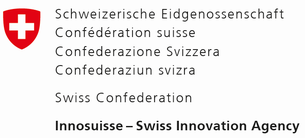
No matter how unique your product or how innovative your design, competition in your startup space is inevitable. This post summarizes a Swisspreneur Podcast with serial entrepreneur Michael Friedrich. In particular, Michael discusses the value of fighting fire with fire instead of reacting fearfully and defensively to competition. In addition to encouraging bolder moves, Michael discusses three other strategies: buy, sell and create the right mindset.
A successful startup knows how to make the presence of competition work for them. According to Michael Friedrich this means using pressure to push development and growth within their product, gather a better understanding of the market, or even acquire the competing business.
Know Your Opponent
As you’re starting out and growing your business it’s crucial to have a strategic analysis of the competitive landscape. This includes knowing who is interested in serving the same need as you and making an assessment of how realistic it will be that your product succeeds.
To the former, researching your competition is best done through a holistic approach. This means understanding that the same need can be served in many different ways; it’s not just about knowing which similar technologies exist but how many existing solutions for the same problem exist. Knowing your competitors allows you to position yourself to create maximum value by focusing on how your product differentiates. Maybe it differentiates in cost, a strong supply chain, better technology, adaptability… whatever it is, find your advantage and sharpen it. Once you know your greatest opponent, get in touch with them. Don’t be afraid to reach out, ask for a call, a meeting or any way where you can generate a healthy discussion to let the CEO know that you’re sharing this space together now.
For the assessment of your products potential you should first have a clear understanding of how global the market that you’re playing in is. For example tech generally targets a global market whereas gluten-free penguin feed might only reach Antarctica and a few zoos. Knowing exactly which environment your product needs to work in is truly the start of your campaign in becoming a strong competitor. In addition to this, talent, work ethic, infrastructure and team culture will all be an early strength in your company.
When it comes to going after your competitors existing clients, focus on building off your strengths rather than attacking your competitors. One by one you must first convince those who have potentially been long-time patrons of your competitors that your approach is sound. To be successful in this it’s valuable to understand the dynamics of previous and ongoing business relationships and knowing the interests of the person you interact with. Politics can play a large role in competition.
The confidence which you built during your strategic analysis comes into play as the success of your product is growing and making waves in the industry. Eventually, you may be positioned head to head with a competitor and are pressed to choose between two options, buy or sell.
BUY
Many consider a big exit as the ultimate achievement in entrepreneurship. While many will chase after this, bear in mind that there are other options on the table, for example, becoming the acquiring company can often be more rewarding than an exit. For this to happen, you must plan to have enough financial firepower in reserve once you are on your way to market dominance, in order to execute acquisitions when opportune and/or necessary. The more diverse your investor base, the wider your potential reach and the stronger your ability to leverage the advantages your company has to put the competitors under pressure.
When you are ready to make moves towards acquiring your competitor, the nature of the relationship will play a big role in how smoothly everything goes down. The less you put the competitor into a state of defence, the more the acquired can see it as a synergistic move and consider your proposal as an extension of their dream. The art of successful acquiring is to reduce notions of threat and increase the spirit of vision and growth.
SELL
Knowing your customer is a rule of thumb in business but what is often forgotten is that there are two types of customers. The first is your commercial customer, the customer who purchases your product. You know this customer well and have been focusing your business development on their needs, segmentation, behaviours etc. The second, and not so obvious customer, is the one who buys your company.
The overlap between competitors and acquirers is best illustrated by the two primary reasons why companies buy startups, for synergy and the more likely reason, out of defence.
Synergistic
● Increase market share
● Acquire new customers
● Uprating margins
● More revenue
● Growth
Defensive
● Protect what you have
● Keep customers
● Maintain revenue and margins
Similarly to knowing the first type of customer, it’s important to know your potential acquirers well. Know how they think, what their pains are, or what they are working on internally. This will allow you to place yourself in their field of needs and increase the likelihood of a successful sale.
No article about competition would be complete without a mention to the human psyche. When it comes to competition in business, the psychological phenomena which stands out the most is the theory behind the psychology of loss. The theory defines itself as an instance where the fear of loss is greater than the desire to gain more. When it comes to your business, you’re more likely to acquire another company out of defence because you feel threatened and have a strong desire to protect what you have. Your competitor who you are acquiring is also likely to sign the deal because of the same tendency.
So, how can you have a mindset which is less loss and risk averse? In other words, how do you become the alpha competitor?
Take the emotion out of the deal
Emotions play a big role in loss aversion. The more emotionally tied we are to a decision, the more that is riding on it and the less likely we are to make the risky choice. We can mitigate this through cognitive reappraisal in an effort to see situations in a new light. For example, instead of thinking about how many long hours you put into the business, and how many birthday parties you missed, consider the company on the larger scale of your entrepreneurial lifespan and beyond.
Increase the sense of community in decision making
Individuality is found to increase loss aversion. The more personal you make a decision, the more fear associated with it. This means, the more collective decision making you take and the more you work together in a team, the more likely you are to make the bolder choice.
Create a culture which accepts mistakes and encourages risk taking
One reason collective culture is said to be less loss averse is because social support tends to reduce the negative effects from loss. In addition to this, collective decision making can help you re-appraise an otherwise emotionally driven decision. For this reason, having a healthy workplace culture where you support decisions regardless of their outcome can have a very positive role on your competitive space.
If you haven’t already read the Swisspreneur article on culture in the workplace click here.
More on the research behind The Impact of Culture and Loss Aversion.
The original research on Aversion Theory.























































Please login or sign up to comment.
Commenting guidelines